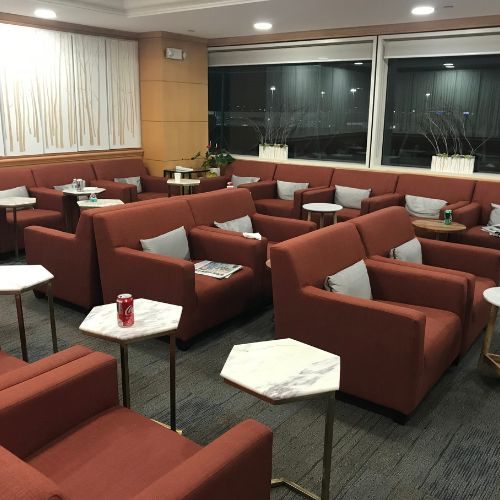Morocco, a land of vibrant colors, intricate patterns, and a deep history, is a country that captures the essence of both African and Arab cultures. For those visiting Marrakech, one of the most enchanting cities in Morocco, the opportunities to explore the nation’s rich cultural heritage are boundless. While Marrakech itself is a treasure trove of history and art, day trips from Marrakech to some of the nearby cultural heritage sites offer a deeper dive into Morocco’s unique tapestry of influences.
Introduction to Morocco’s Cultural Heritage
Morocco is a nation that prides itself on its diverse cultural legacy, shaped by centuries of history, trade, and various civilizations. From the Berbers, who were the original inhabitants, to the Arabs who brought Islam, to the French colonial influence, Morocco’s culture is a blend of many different traditions. This diversity is reflected in the country’s art, architecture, and historical sites, making it a fascinating destination for history buffs and art enthusiasts alike.
Why Choose a Day Trip from Marrakech?
Marrakech, often referred to as the “Red City” due to the color of its buildings, is a bustling metropolis where tradition meets modernity. However, the city can be overwhelming with its busy souks, crowded streets, and constant buzz. A day trip outside of Marrakech not only provides a break from the city’s frenetic pace but also allows travelers to experience the historical depth and artistic richness of Morocco in a more tranquil setting.
Aït Benhaddou: The Iconic Kasbah
One of the most popular day trips from Marrakech is a visit to Aït Benhaddou, an ancient fortified village located about 180 kilometers southeast of the city. This UNESCO World Heritage site is an exemplary representation of traditional Moroccan earthen clay architecture.
History of Aït Benhaddou
Aït Benhaddou dates back to the 11th century and was once an important stop along the caravan routes between the Sahara and Marrakech. The village’s strategic location made it a hub for trade, particularly in gold, salt, and spices. Today, it stands as a testament to Morocco’s rich history and has even served as a backdrop for several famous films, including “Gladiator” and “Game of Thrones.”
Exploring the Kasbah
Visitors to Aït Benhaddou can wander through the narrow, winding streets of the kasbah, exploring its ancient homes, granaries, and mosques. The views from the top of the hill are breathtaking, offering a panoramic vista of the surrounding desert landscape. It’s easy to imagine the bustling life that once filled these now-quiet streets.
The Majestic Ouzoud Waterfalls
For those who appreciate natural beauty intertwined with cultural significance, a day trip to the Ouzoud Waterfalls is a must. Located about 150 kilometers northeast of Marrakech, the Ouzoud Falls are the highest in North Africa, cascading over 110 meters into the canyon below.
Cultural Significance of the Ouzoud Waterfalls
The Ouzoud Waterfalls are not just a natural wonder; they are also a site of cultural importance. The surrounding area is home to traditional Berber villages, where visitors can experience the local way of life. The Berbers are known for their hospitality, and a visit to one of these villages offers a glimpse into their rich cultural traditions, from their unique architectural styles to their traditional crafts.
Activities at Ouzoud Waterfalls
Apart from enjoying the stunning views of the falls, visitors can take a boat ride to get up close to the cascading water, hike through the olive groves that surround the falls, or even enjoy a meal at one of the local restaurants overlooking the waterfalls. The area is also a great spot for bird watching, with a variety of species inhabiting the lush surroundings.
Essaouira: The Coastal Gem
Another fantastic day trip option from Marrakech is the coastal city of Essaouira. Known for its laid-back vibe, whitewashed buildings, and beautiful beaches, Essaouira is a stark contrast to the hustle and bustle of Marrakech.
Historical Significance of Essaouira
Essaouira has a rich history that dates back to the Phoenician era. Over the centuries, it has been influenced by various cultures, including the Portuguese, who built the city’s impressive fortifications. The city was also a major center for the Jewish community in Morocco, and its old medina, now a UNESCO World Heritage site, is a fascinating place to explore.
Art and Culture in Essaouira
Essaouira is known for its thriving arts scene, with numerous galleries showcasing the work of local and international artists. The city is also famous for its music, particularly the Gnaoua music genre, which has its roots in West Africa. The annual Gnaoua World Music Festival draws visitors from around the world and is a celebration of music, culture, and history.
Ouarzazate: The Gateway to the Sahara
Ouarzazate, often referred to as the “Door of the Desert,” is another excellent day trip destination from Marrakech. This city, located about 200 kilometers southeast of Marrakech, is the gateway to the Sahara Desert and is known for its stunning landscapes and historical sites.
Historical Importance of Ouarzazate
Ouarzazate has been a crossroads for traders for centuries, connecting the Sahara with the rest of Morocco. The city is home to the impressive Taourirt Kasbah, a sprawling structure that was once the residence of the Glaoui family, one of the most powerful families in Morocco. The kasbah is a maze of corridors, rooms, and courtyards, offering a glimpse into the life of Morocco’s elite during the 19th century.
Ouarzazate in Film and Television
Ouarzazate has earned the nickname “Ouallywood” due to the many films and television shows that have been shot here. The city’s unique landscape, with its stark desert vistas and ancient kasbahs, has made it a favorite location for filmmakers. Visitors can tour the local film studios and even visit some of the famous sets, including those from movies like “Lawrence of Arabia” and “The Mummy.”
Tizi n’Tichka Pass: A Scenic Drive Through the Atlas Mountains
For those who enjoy scenic drives, the Tizi n’Tichka Pass offers one of the most breathtaking routes in Morocco. This mountain pass, which connects Marrakech to the desert regions of the south, is the highest in North Africa, reaching an elevation of 2,260 meters.
The Beauty of the Atlas Mountains
The drive through the Tizi n’Tichka Pass is a journey through the heart of the Atlas Mountains, with stunning views of snow-capped peaks, deep valleys, and traditional Berber villages clinging to the mountainsides. The road is an engineering marvel, winding its way up and down the mountains with numerous hairpin bends and steep climbs.
Cultural Stops Along the Way
Along the way, there are several cultural stops where visitors can learn more about the Berber culture. These include visits to local markets, where artisans sell handmade crafts, and stops at ancient kasbahs, where history seems to come alive. The Tizi n’Tichka Pass is not just a road; it’s a journey through the cultural heart of Morocco.
The Roman Ruins of Volubilis
For a day trip that offers a glimpse into Morocco’s ancient past, a visit to the Roman ruins of Volubilis is highly recommended. Located about 160 kilometers from Marrakech, Volubilis is one of the best-preserved Roman ruins in North Africa.
Historical Background of Volubilis
Volubilis was an important Roman city, serving as the administrative center of the province of Mauretania Tingitana. The city was founded in the 3rd century BC and flourished under Roman rule, becoming a hub for trade and agriculture. The ruins today offer a fascinating insight into the Roman way of life in North Africa.
Exploring the Ruins
Visitors to Volubilis can explore the extensive ruins, which include a basilica, a triumphal arch, and several houses with beautiful mosaics. The site is set against a backdrop of rolling hills and olive groves, making it a peaceful place to explore and reflect on the region’s ancient history.
Conclusion: A Journey Through Time and Culture
A day trip from Marrakech to explore Morocco’s rich cultural heritage sites is more than just a journey; it’s an immersion into the country’s soul. Whether you’re wandering through ancient kasbahs, marveling at natural wonders, or exploring the remnants of a Roman city, each site offers a unique glimpse into the diverse cultural tapestry that makes Morocco so special. These day trips not only provide a deeper understanding of Morocco’s history and art but also leave you with memories of the stunning landscapes and warm hospitality that this country is known for.




